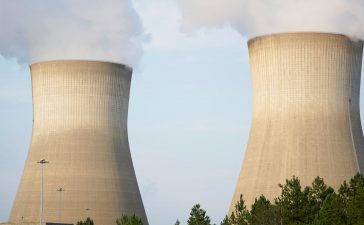BP has predicted that the world’s demand for oil will peak next year, bringing an end to rising global carbon emissions by the mid-2020s amid a surge in wind and solar power.
The energy company’s influential outlook report has found that oil use will increase by about 2m barrels a day to peak at about 102m in 2025 across both of its forecasts.
The first forecast scenario shows the world’s current energy transition trajectory and the other shows the pathway to meeting global net zero targets by 2050.
BP predicts in both scenarios that carbon emissions will reach a peak in the middle of the decade amid a rapid expansion of wind and solar power as technology costs continue to fall.
However, the report sets out starkly different pathways for the future demand for gas, which has emerged in recent years as key growth area for energy companies including BP.
Under the report’s net zero scenario, gas use would peak around the middle of this decade before halving by 2050, compared with 2022 levels. But the current trajectory suggests gas demand will continue to grow throughout the forecast, expanding by about a fifth by 2050.
In the scenarios, demand for liquefied natural gas, which is cooled to be transported on ships, climbs by 40% and 30% above 2022 levels respectively.
The report also suggests higher-than-expected oil consumption in the 2030s compared with BP’s previous forecasts, which would pose a serious threat to the world’s climate targets.
The oil company said its forecasts for the current global trajectory, which included climate policies already in place, showed the world would breach the carbon budgets keeping global temperatures from rising above 2C above preindustrial levels.
Under the current trajectory oil demand is expected to fall to 97.8m barrels a day in 2035, which is 5% higher than last year’s BP forecasts. The net zero model predicts demand will remain at 80.2m barrels in 2035, up 10% on last year’s outlook.
BP said oil would continue to “play a significant role in the global energy system for the next 10-15 years”.
The company attracted anger from environmental campaigners after watering down a pledge to cut oil and gas production by 40% by 2030, compared with 2019 levels, to a 25% decline after Russia’s invasion of Ukraine ignited a surge in global energy market prices.
The outlook’s findings are likely to stoke fears that the global shift away from fossil fuels towards clean power may be slowing, in part due to rising energy demand in developing economies.
after newsletter promotion
Spencer Dale, BP’s chief economist, said the world was in an “energy addition phase” during which the consumption of both low-carbon energy such as renewables and fossil fuels was increasing.
In order to keep a cap on rising emissions, low-carbon sources would need to roll out at a pace that matched the increase in global energy demand, Spencer added.
BP’s outlook predicts wind and solar power capacity will increase eightfold by 2050 under the world’s current climate policies and by a factor of 14 under its net zero scenario, compared with 2022 levels.
Expansion in renewable energy projects is expected to be concentrated in China and developed economies over the next decade, accounting for about 30% to 45% of the increase in new capacity across BP’s two scenarios.
The rapid expansion in wind and solar power will enable further declines in technology and energy costs that will in turn support more renewable projects, the company said.










